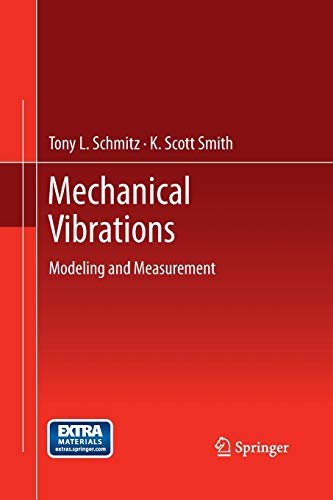A harmonic motion has an amplitude of (0.2 mathrm{~cm}) and a period of (15 mathrm{~s}). (a) Determine
Question:
A harmonic motion has an amplitude of \(0.2 \mathrm{~cm}\) and a period of \(15 \mathrm{~s}\).
(a) Determine the maximum velocity \((\mathrm{m} / \mathrm{s})\) and maximum acceleration \(\left(\mathrm{m} / \mathrm{s}^{2}\right)\) of the periodic motion.
(b) Assume that the motion expresses the free vibration of an undamped single degree of freedom system and that the motion was initiated with an initial displacement and no initial velocity. Express the motion (in units of meters) in each of the following four forms:
- \(A \cos \left(\omega_{n} t+\Phi_{c}\right)\)
- \(A \sin \left(\omega_{n} t+\Phi_{s}\right)\)
- \(B \cos \left(\omega_{n} t\right)+C \sin \left(\omega_{n} t\right)\)
- \(D e^{i\left(\omega_{n} t\right)}+E e^{-i\left(\omega_{n} t\right)}\).
Step by Step Answer:

Mechanical Vibrations Modeling And Measurement
ISBN: 119669
1st Edition
Authors: Tony L. Schmitz , K. Scott Smith





